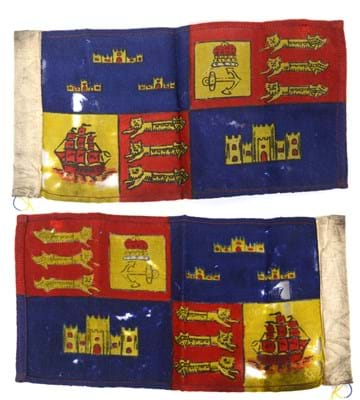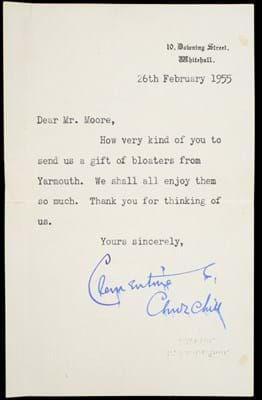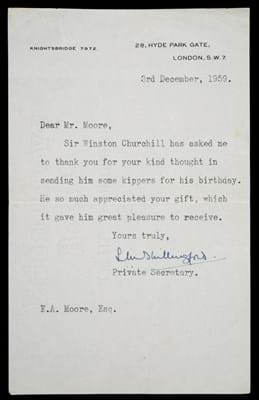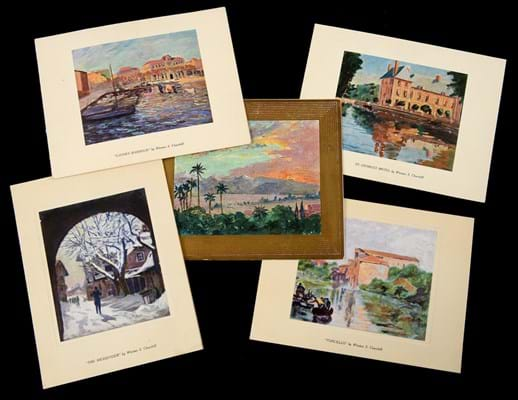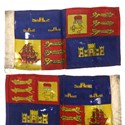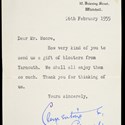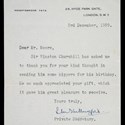Items related to the great wartime leader appear often at auction, ranging from letters and documents to the paintings he created for relaxation.
In December 2014 paintings and objects from the estate of the late Mary Soames, the youngest daughter of Churchill, were sold at Sotheby’s in London.
At the centre of the sale were 15 paintings by her father, said to be the most important and personal group of his works to come to the market.
A collection of Churchill-related items is to be offered at auction on June 2 at Greenslade Taylor Hunt’s Octagon salerooms in Taunton.
Although not at the same price level as that Sotheby's sale, which included £1.5m for a 1932 Churchill oil painting, it does have a strong provenance.
The group is consigned from the estates of the late Grace Hamblin, his wartime secretary, and her lifelong friend 'Mr Moore', sometime toastmaster and pianist at Chartwell.
Among the lots are Churchill’s Warden of Cinque Ports car pennant, an office he held from 1941-65, a signed photographic portrait by Walter Stoneman of Baker Street, London, personal correspondence and Christmas cards.
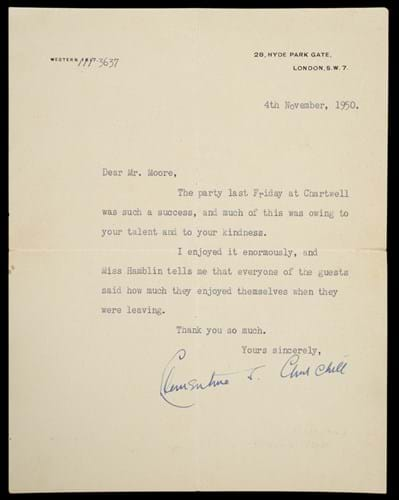
Letter from Lady Clementine Churchill to Mr Moore from the Grace Hamblin collection to be sold by Greenslade Taylor Hunt on June 2 (written letters and typed correspondence estimated at £200-300).
The family of Mr Moore, who have fond memories of ‘Aunt Grace’, decided to sell the collection and called specialist Malcolm Claridge to advise.
Claridge says: “The collection is unique as it comes from ordinary people who both worked for and had strong emotional connections to the Churchill family. For instance there is among the correspondence a letter from 10 Downing Street, signed by Lady Clementine Churchill and addressed to Mr Moore, thanking him for his ‘Gift of Bloaters from Yarmouth’ and another thanking him for sending ‘Kippers for Sir Winston Churchills Birthday’, both of which I found very endearing.”
Efficient secretary
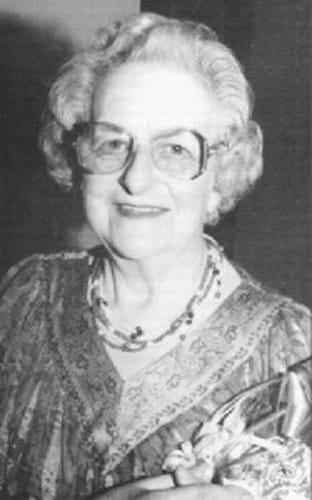
Grace Hamblin, wartime secretary to Sir Winston Churchill, whose collection of memorabilia is being auctioned at Greenslade Taylor Hunt on June 2.
Hamblin (1908-2002) was the ever-efficient private secretary of Winston and Clementine Churchill for more than 40 years.
An obituary in The Telegraph said: “Nicknamed ‘Hambone’ by their children, she first came in from Crockham Hill, the village near the Churchill home at Chartwell Manor, to help during the holiday period in 1932."
It added: “One of her early tasks was to type the manuscripts for Churchill’s slim essay Painting as a Pastime and his four-volume life of the 1st Duke of Marlborough. This often involved his settling down to work in a relaxed and jovial mood at 10pm, continuing until late into the night. Sometimes the great man dictated slowly, weighing every word and murmuring sentences to feel their sound. At others, he brought them forth with tremendous force, glaring at the secretary to give them additional impact.”
When Churchill was appointed prime minister in 1940, Hamblin left her parents, home in the village to work for him in London. She became Mrs Churchill’s secretary while insisting on living at 10 Downing Street - though it was deemed too unsafe for the prime minister to sleep there at night.
At the end of the war Grace returned to her previous all-embracing duties at Chartwell, which she continued to manage when Churchill regained power in 1951, since he preferred to stay there rather than at Chequers.
After his final retirement in 1955, Grace was appointed OBE and continued to live at home with her widowed mother, while keeping a wary eye on the now elderly couple and their household. Ten years later, she was among the small number who were not members of the family to attend Churchill's interment at Bladon church. She was the inevitable choice to become the first curator of Chartwell when it was passed to the National Trust.
The Telegraph obituary added: “When Grace sold, for 7000 guineas, the picture Churchill had given her, La Beguinage (which he had painted at Bruges in 1946), she announced she was parting with it for personal reasons: to buy a house at Westerham, where she could see people walking on the green near Sir Winston’s statue.”



